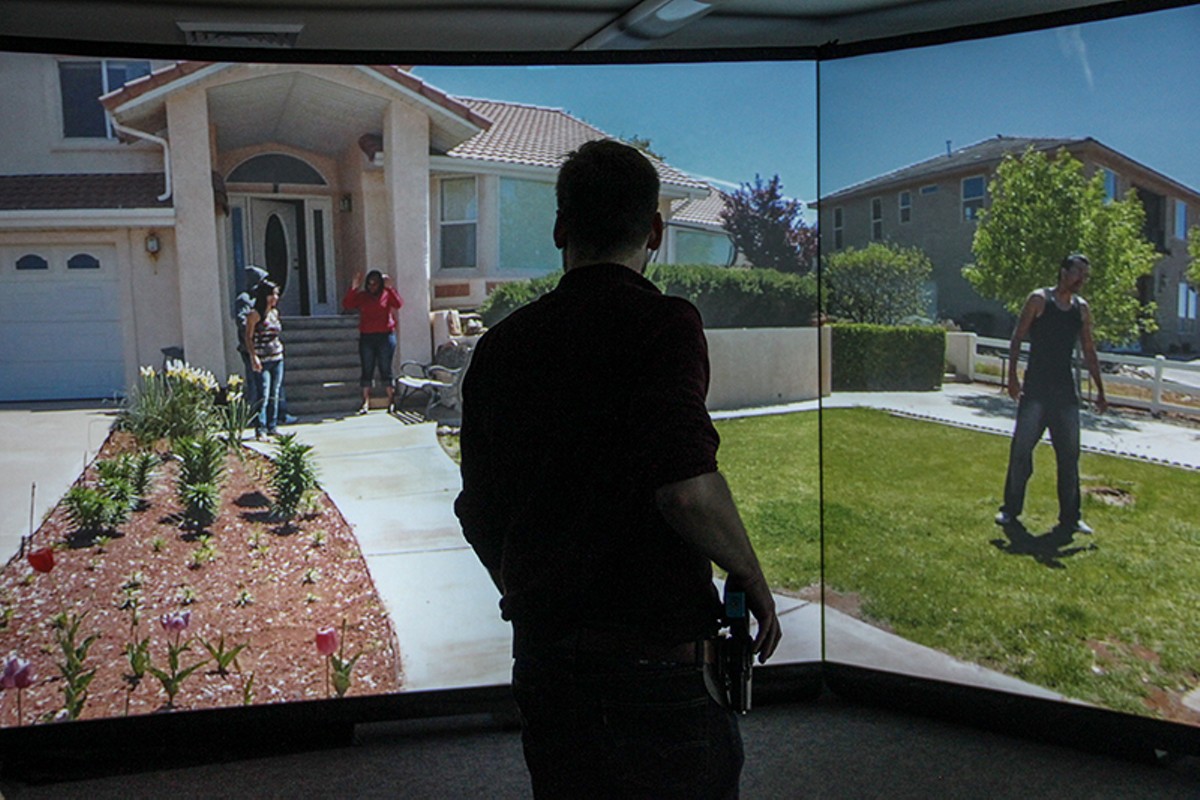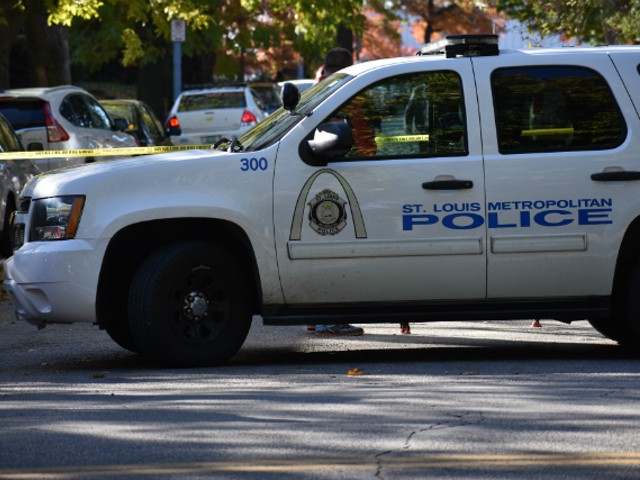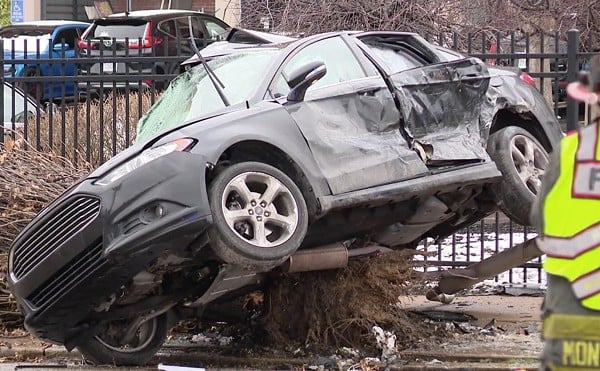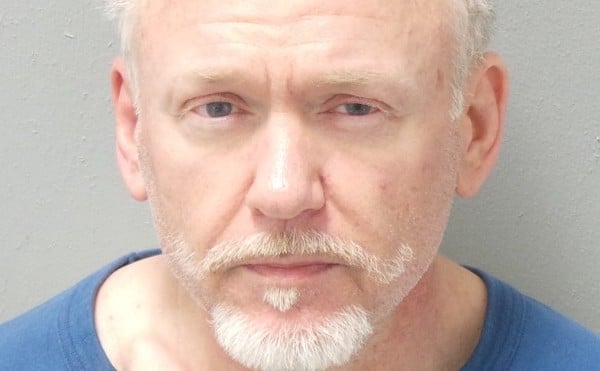In reality, police shootings are tragic but often avoidable human disasters that leave behind pain and little resolution. In a VirTra simulation, they are something else.
With a hum, three floor-to-ceiling screens flicker to life inside a darkened, equipment-cluttered room in a law enforcement academy in Hillsboro. This is the VirTra, a "Judgmental Use of Force Training and Firearms Simulator." Onscreen, the projected images of real actors plead, argue, curse, shoot, run, surrender and fight through hundreds of scenarios meant to mimic the real world.
Or, at least, some version of it. Potentially, a dangerous one, filled with split-second ambushes and weapons hidden in the folds of a bystander's sweatshirt.
It is a version of the world where the dead come back to life. After the scenario ends, you see them frozen at the moment of trigger pull, digital ghosts marked by blue dots to show where your laser-simulated shots struck them.
This is the police training of today. The departments in St. Louis County, Jefferson County and O'Fallon rely on VirTra's popular brand of simulation platform, which uses special effects, dozens of actors and a branching system of choices to produce what the company calls "better outcomes" in real use-of-force situations. For an outsider, however, that claim is difficult to fact check.
It is a Tuesday in December, and in a back room normally used by police trainees, the Jefferson County Sheriff's Department allows a Riverfront Times writer and other local reporters to try the VirTra. Normally, deputies train on the VirTra for two to three hours over the course of a year. My time in the simulator runs 40 minutes, and that's after sitting through some five hours of classroom courses, which largely involve discussions about police incidents captured on video.
Allowing reporters into the VirTra is a first-of-its-kind offer from Sheriff Dave Marshak. In his invitation, addressed to "media members," he explained that he wanted "to help you tell a more in-depth and well-rounded story" while learning "the nuances of use of force situations."
The VirTra simulator, the invitation continued, would "open your eyes" to why even shooting someone in the back "may actually be the best choice for an officer."
In theory, the VirTra seeks to use high-production interactive media to simulate use-of-force scenarios that would be impossible, or prohibitively expensive, to do in real life.
In practice, the VirTra's "judgmental training" is about as sophisticated as a choose-your-adventure novel. There's no artificial intelligence behind the characters onscreen, no software that determines whether the belligerent suspect in front of you, for instance, uses a bottle of coconut liquor to hit you or meekly surrenders and apologizes for overreacting.
Instead, it is a human "operator" at the controls of your virtual reality. Today, that's a Jefferson County sheriff's deputy named Matt, who sits at a computer monitor behind me and uses VirTra's control platform to alter dialogue and ratchet the danger. While I try to role-play police tactics, Matt is clicking through possible futures and deciding if they'll work.
With its three screens, this model of the VirTra provides a 180-degree field of possible action. In a way, the simulator, which can cost up to $300,000, could be seen as the most extravagant and immersive video game ever produced. After entering the room, I relinquish my camera to the care of Sheriff Marshak (deputizing him as an RFT photographer in the process).
In exchange, I'm equipped with a holster and a Glock pistol whose barrel is modified with a laser to record accuracy. It's loaded to "fire" with a CO2 cartridge, which delivers just enough kick to knock back the slide on each shot.
Marshak provides some coaching and encourages me to get into the role. Shooting tactics can be tested, of course, but also the trainee's behavior. In this capacity, the VirTra becomes less of a target simulator than a kind of instructive monologue, performed for an audience of one. In this case, I'd be performing for Deputy Matt.
"The operator here can change the scenarios based upon how you're talking to an individual," Marshak advises. "He can set it for 'compliance,' or we can make things go to the other end of the spectrum."
For officers, he explains, the VirTra training is an opportunity to "work on deescalation tactics and shooting decisions." For the sheriff, the crucial part of that decision training is the possibility for failure, and he believes that's a role where the VirTra excels.
"Let's get the mistakes out of the way in this room," Marshak says. "Let's have the tough conversations about why you made the decisions you did."






